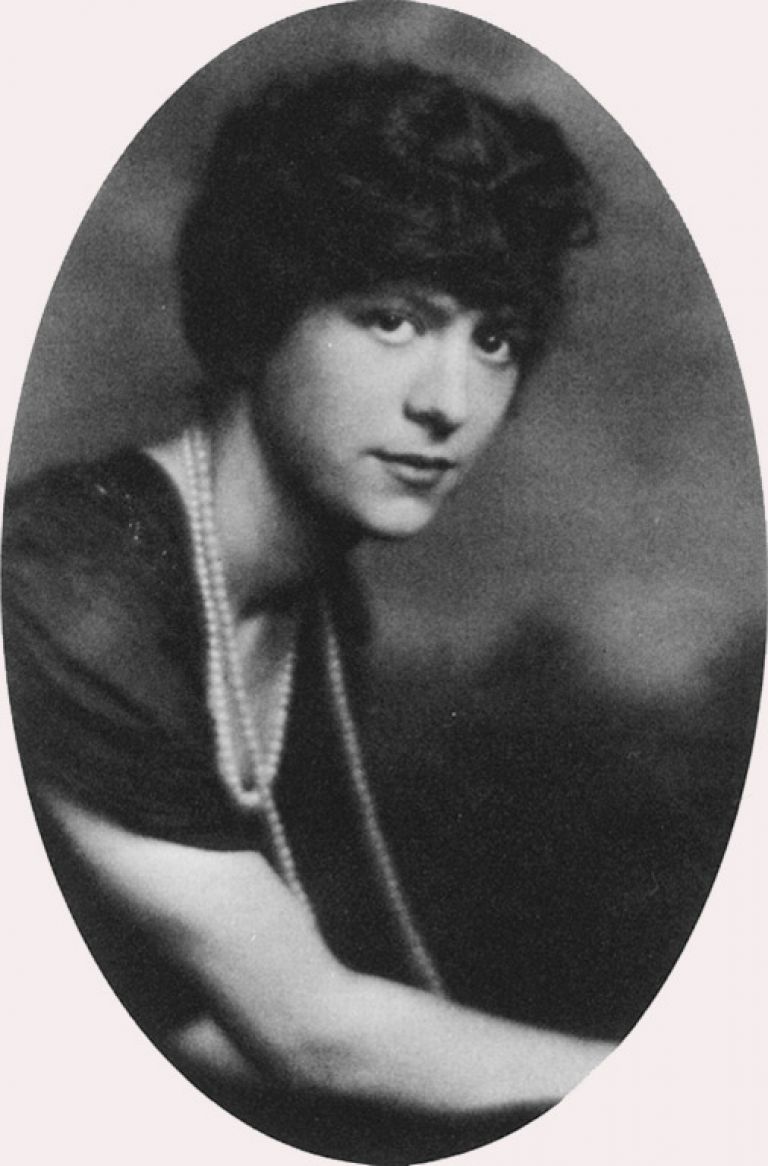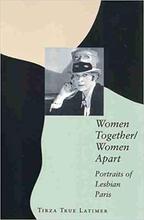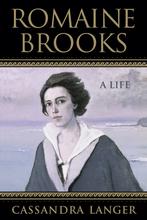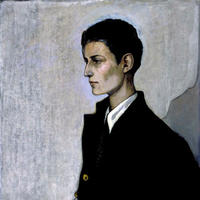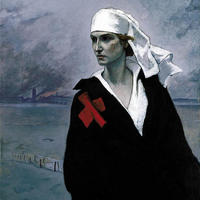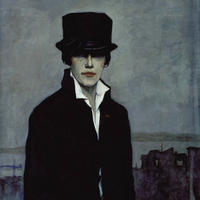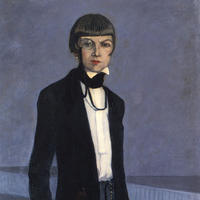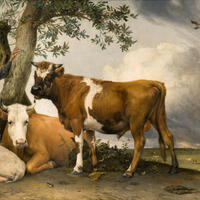More about Romaine Brooks
- All
- Info
- Shop
Works by Romaine Brooks

Contributor
Romaine Brooks was the turn-of-the-century equivalent of a trust fund baby, but when she received her inheritance in 1902, at the age of 28, she used the money to fund a lifestyle her wealthy parents would disapprove of on many levels.
To begin with, she was an artist: she had been drawing from a young age, to the disappointment of her mother. She also spent the money hopping from hotel to hotel in Paris and Rome, involving herself in French salon life, painting nude women, and generally acting like a comfortable early-twentieth-century European gay woman, which she was. After the failure of a brief experiment with a traditional heterosexual monogamous marriage, Brooks gave up on both the “heterosexual” and “monogamous” parts of the equation and centered her life and art around other women.
Brooks’ specialty was dramatic portraits of fellow lesbians. As contemporaneous modern art, such as Cubism and Expressionism, grew popular, sometimes her focus on portraiture was labeled as artistically conservative, as well as not being a good business model. However, the art form was an experimental one for women sitters and artists alike—in earlier, male-dominated portraiture and figure painting, women were decorative objects, as opposed to the individuals that Brooks was depicting.
In addition, just as male artists of the time began to challenge artistic conventions like perspective and proportion, Brooks and other lesbian and bisexual women artists began to challenge social conventions of gender, sexuality, and biological essentialism through their work, a project in art that goes on to the modern day. Many of her compatriots (herself included) were women who wore “men’s” clothes on a daily basis, and her portraits accurately depict the way in which they combined, confused, and challenged 1920s-era norms of masculinity and femininity.
In the 1930s, Brooks started an illustrated autobiography. The book was never completed and published, and it marks the end of her public art career. She lived until 1970, a depressing juxtaposition; you have to wonder how her art, particularly of LGBTQ+ people and experiences, would have changed and evolved in those transformative decades.
Sources
- Elliott, Bridget, and Jo-Ann Wallace. "Fleurs Du Mal or Second-Hand Roses?: Natalie Barney, Romaine Brooks, and the 'Originality of the Avant-Garde'." Feminist Review, no. 40 (1992): 6-30. doi:10.2307/1395274.
- Lampela, Laurel. "Daring to Be Different: A Look at Three Lesbian Artists." Art Education 54, no. 2 (2001): 45-51. doi:10.2307/3193946.
- Heng, Briedy. “A Lesbian Artist Who Painted Her Own Circle of Women at the Turn of the 20th Century.” Hyperallergic, September 27, 2016, https://hyperallergic.com/325736/a-lesbian-artist-who-painted-her-circl….
Featured Content
Here is what Wikipedia says about Romaine Brooks
Romaine Brooks (born Beatrice Romaine Goddard; May 1, 1874 – December 7, 1970) was an American painter who worked mostly in Paris and Capri. She specialized in portraiture and used a subdued tonal palette keyed to the color gray. Brooks ignored contemporary artistic trends such as Cubism and Fauvism, drawing on her own original aesthetic inspired by the works of Charles Conder, Walter Sickert, and James McNeill Whistler. Her subjects ranged from anonymous models to titled aristocrats. She is best known for her images of women in androgynous or masculine dress, including her self-portrait of 1923, which is her most widely reproduced work.
Although her family was wealthy, Brooks had an unhappy childhood after her alcoholic father abandoned the family; her mother was emotionally abusive and her brother mentally ill. By her own account, her childhood cast a shadow over her whole life. She spent several years in Italy and France as a poor art student, then inherited a fortune upon her mother's death in 1902. Wealth gave her the freedom to choose her own subjects. She often painted people close to her, such as the Italian writer and politician Gabriele D'Annunzio, the Russian dancer Ida Rubinstein, and her partner of more than 50 years, the writer Natalie Barney.
Although she lived until 1970, it is erroneously believed that she painted very little after 1925 despite evidence to the contrary. She made a series of drawings during the 1930s, using an "unpremeditated" techniques predating automatic drawing. She spent time in New York City in the mid 1930s, completing portraits of Carl Van Vechten and Muriel Draper. Many of her works are unaccounted for, but photographic reproductions attest to her ongoing artwork. It is thought to have culminated in her 1961 portrait of Duke Uberto Strozzi.
Check out the full Wikipedia article about Romaine Brooks

